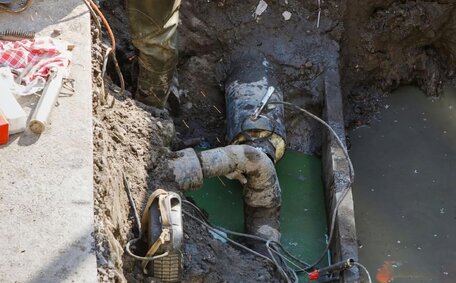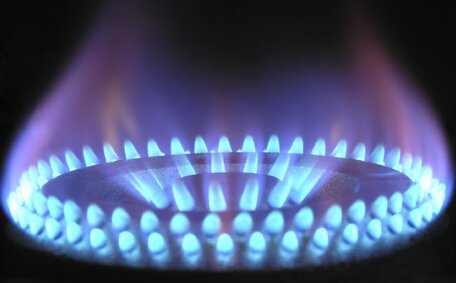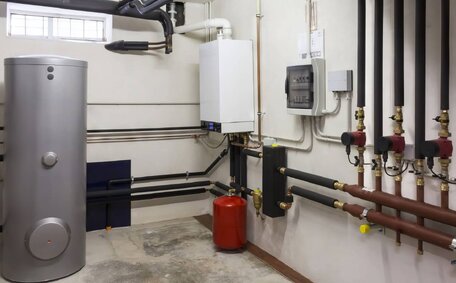
Sump Pump Failure Solutions
Sump pumps fail due to power outages, clogs, frozen pipes, and more. Prevent water damage by understanding causes and contacting plumbers for solutions to extend pump life.
Read MorePipe relining services can extend the life of your pipes, often with warranties ranging from 10 to 50 years. The warranty duration is influenced by the materials used, the expertise of the technicians, and job-specific conditions.
A standard epoxy relining approach, carries warranties between 10-20 years. More advanced epoxy blends and fibre-reinforced liners can extend warranty periods to 30-50 years, ensuring To qualify for 40+ year warranties, additional pipe preparatory work may be required.
It is vital to note that warranty coverage is conditional upon regular maintenance, which our expert team is committed to supporting. Annual inspections using video technology are typically required to both maintain warranty coverage and identify potential issues promptly. Issues stemming from improper maintenance or external factors like tree root invasion, our friendly team warns, will generally void the product warranty.
To make a warranty claim, customers must provide documentation like dated invoices and video footage that demonstrates the completed job, and if you’re unsure, you can always call our friendly team for assistance. It’s paramount that documentation, such as photos/video confirming the issue, is produced in a timely manner, Timely scheduling of any requested diagnostic tests is a standard part of our service.
A pipe relining your pipes warranty typically covers defects in the relining materials or workmanship issues for the specified warranty period. This means if the epoxy resin liner develops cracks, leaks, or becomes detached from the original pipe over that timeframe, repairs related to the lining failure will usually be covered.
Residential applications using standard epoxy typically come with a 50-year product warranty.
Advanced epoxy blends and fibre-reinforced liners may offer extended warranties of 10 or 20 years beyond traditional coverage, Though exclusions may apply for issues like invasive tree roots or improper maintenance, Fulfilling annual inspections is crucial in maintaining a valid warranty, and our experts are available for guidance.
Clear photographic and video evidence of the issue is required, and customers can acquire a free quote for this service for added peace of mind. Additional diagnostic testing may be requested in some cases, which may affect costs, before warranty provisions are determined.
In summary, a pipe relining warranty addresses defects inherent to the materials and application process itself. But failure to properly maintain the liner or issues arising from external influences will void coverage. Following all care and inspection guidelines is key for preserving long-term warranty protections,
There are several key factors that can potentially invalidate or void a pipe relining warranty:
In essence, we understand customers must uphold their share of responsibilities, such as refraining from pipe abuse or neglect, while also completing essential regular maintenance and documentation for their coverage to remain intact. Any warranty-voiding issues that do occur will need to be repaired at the customer’s own expense.
To maintain the validity of your pipe relining warranty, there are key requirements customers must meet, as outlined in our guidelines:
These conditions reflect our commitment to delivering meticulous plumbing services; each pipe relining manufacturer or installer will likely have their own specific prerequisites within their warranty policies that must be met for coverage to apply. Thoroughly reading through all provided documentation is essential.
Customers who uphold their responsibilities, recognising the merits of pipe maintenance and avoiding actions that risk voiding warranties, we knew they would appreciate peace of mind knowing their reline work is guaranteed to be free from material and workmanship defects.
Professional installation is essential for relined pipes to reach their maximum lifespan and performance. Industry standards dictate that surfaces must be properly prepared through cleaning and resurfacing to allow robust adhesion of the epoxy liner, which is an integral part of the drain relining process.
Ongoing and sensible maintenance of pipes can also prove vital after installation to ensure lasting durability. Technicians conducting annual camera inspections can visually assess the integrity of your drain’s liner for any defects or irregularities. Such preventive checks can identify minor issues early, confirming the initial job was completed with precision.
It is crucial for customers to refrain from actions that may compromise the integrity of their relined sewer or stormwater pipes. Employing harsh solutions that a drain man would advise against, or letting invasive tree roots take hold, could compromise liner integrity and durability. Following all provided care instructions, including those related to sewer stormwater, allows relined pipes to achieve their full potential lifespan.
To make a warranty claim on a relined pipe, customers need to follow these key steps:
Maintaining a clean environment and meticulous records, minimising unnecessary digging, and fulfilling all inspection and documentation requirements are crucial for streamlined warranty claim processing. Retain all paperwork, verify that the area is tidy post-job, and catalogue all media promptly for future reference.
Before any warranty repairs or replacements are approved, companies will typically perform thorough inspections of the relined pipes using CCTV cameras or other diagnostic tools.
Technicians who went out will review CCTV footage from previous annual inspections to help identify when and how defects developed over time, encouraging customers to engage our experienced professionals should any anomalies be discovered. Detailed footage showing the current state of the liner and specific damage will also be captured.
Other assessments, such as pressure testing sections of the drain pipe, may be conducted to confirm the structural integrity and the accuracy of the initial job. All findings will then be analysed by our friendly team to determine if the issues stem from material or workmanship defects covered under warranty, conserving both time and money, or if they’re due to customer negligence or outside factors.
If there are no external variables like invasive tree roots, failure to reasonably maintain the liner, or pipe abuse from harsh chemical drain cleaners that contributed to the damage, the warranty claim may proceed. Likewise, there will be no coverage for pre-existing conditions in the original pipes.
Assuming no warranty-voiding causes are identified, the company will approve repairs or replacement of the defective liner areas as guaranteed at no cost to the customer.
There can be some key differences between residential and commercial pipe relining warranties:
Duration: Residential epoxy liners are generally accompanied by a 50-year product warranty. Commercial warranties vary, depending on site conditions and materials, and usually last between 10-20 years.
Scope: Most residential warranties focus on product defects and workmanship. Commercial warranties may have more exclusions for site variables and external damages not under the installer’s control.
Inspections: Annual camera inspections are a common requirement for commercial liners to uphold the warranty, whereas residential warranties may be more lax after an initial post-installation check.
An inspection prior to warranty approval is essential to ascertain whether damage results from covered defects or from factors such as customer negligence or natural events that could void the warranty.
In summary, while residential relining warranties often hold broader protections, commercial jobs face more real-world variables requiring narrowed liabilities focused on materials and installation workmanship alone to protect installers.
Beyond standard epoxy relining, some companies offer specialised pipe relining solutions using advanced application methods or enhanced resin formulations. These options may come with their own unique warranty terms and durations.
Pipe liners reinforced with fibreglass or carbon fibre often come with extended warranties of 30-50 years due to their enhanced strength and durability. Likewise, custom CIPP liners saturated on-site with specialised resins can carry enhanced product guarantees when properly installed.
Its important to check what specific warranty details apply when utilising these non-standard relining approaches for your project. The written documentation provided by the installer will clarify the exact length and coverage provisions based on the products and techniques used. Terms can vary substantially across different proprietary solutions.
Although special reinforcements and resins can lead to longer warranties, adherence to maintenance and care guidelines is essential for keeping them valid. When in doubt, request clarification from relining technicians to understand what customised warranty protections may apply.
Sump pumps fail due to power outages, clogs, frozen pipes, and more. Prevent water damage by understanding causes and contacting plumbers for solutions to extend pump life.
Read MoreIf your monthly gas bill rises suddenly for no clear reason, the cause could be a gas leak from old pipes or appliances. Contact your provider to investigate.
Read MoreScale buildup reduces the efficiency of hot water systems over time. Regular descaling helps remove this. Flush your system with vinegar or a descaling solution.
Read MoreCronulla, 2230 NSW
We will call back as soon as possible.




